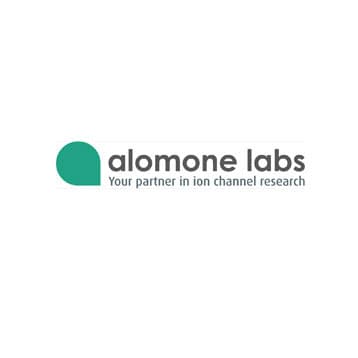
Supplier:
Alomone Labs Ltd.Cat no: ATR-005
Anti-Thyrotropin-Releasing Hormone Receptor 1
In the hypothalamus, TRH is secreted from the paraventricular nucleus (VPN) by TRH neurons prior to a post-translational processing from its precursor, pro-TRH. A key player in the regulation of the hypothalamus-pituitary-thyroid (HPT) axis, TRH is released into the hypophyseal portal circulation of the median eminence and reaches the pituitary, where it binds to TRH receptors, thereby stimulates the secretion of tyrothropin (thyroid-stimulating hormone; TSH). TSH, in turn, affects the thyroid to produce T4 which is subsequently converted into its biologically-active analog, T3 - a negative mediator of TRH. In the tanycytes, ependymal cells of glial origin located in close proximity to the VPN, T4 is converted to T3 by the enzyme deiodinase II (dio2) - a counterpart to deiodinase III (dio3) which conversely inactivates the above mentioned thyroid hormones, thus so indirectly promotes the production of TRHs.
TRH receptor 1 (TRH-R1), the only identified TRH receptor in humans, is a G protein-coupled receptor (GPCR) abundant in the anterior pituitary, neuroendocrine system, autonomic nervous system and the visceral regions of the brain. Like all members of GPCRs, TRH receptor has seven transmembrane domains, and extracellular N-terminus and an intracellular C-terminal tail. TRH receptor couples Gq upon activation which in turn leads to the activation of phospholipase C.
From a behavioral aspect, it was shown that TRH-coupled TRH-R1 increases cognitive arousal by directly exciting the sleep/wake system in the lateral hypothalamic area, and inhibits seizure activity in the hippocampus by facilitating GABA release, whereas its deficiency, as observed in mutant model mice, is linked to growth retardation, depression, and anxiety-like behavior.
Prices direct from Alomone Labs Ltd.
Quick response times
Exclusive Biosave savings/discounts
SPECIFICATIONS
Catalog Number
ATR-005
Size
0.2 ml
Applications
WB
Hosts
Rabbit
Reactivities
Hum, Mouse, Rat
Conjugates
Unconj
Form
Affinity purified antibody, lyophilized powder
Target
TRH1 Receptor, TRH-R; Thyroliberin receptor
Clonality
Polyclonal
Shipping Temp
Room Temperature
Target Synonym
TRH1 Receptor, TRH-R; Thyroliberin receptor
More from Alomone Labs Ltd.
Latest promotions
Spend less time on DNA cleanup so you can do more science. The MSB Spin PCRapace is the fastest way to purify your DNA from PCR, restriction digestion, and...
New brilliant antibodies, and new lower prices!For flow cytometry reagents in general, \"bright is better.\" The violet-excitable BD Horizon™ BV421 and...
As an incentive to qualify our BSA, we are offering a 20% discount when you purchase your first 100g, 500g or 1000g of any grade of Bovine Serum Albumin....
It is not every day that you are given something for nothing. We are giving away additional spectrophotometer software.Cecil Instruments have enhanced the...
We're so sure that you'll prefer Cayman Assay kits over your present brand that we're willing to give you a free assay kit to prove it!
10% Discount on 2 Rabbit Polyclonal Antibody Service. With over 20 years experience, SDIX has developed into the premier US custom antibody producer,...
For the past decade scientists have extensively used ATS secondary toxin conjugates to make their own targeted toxins for in vitro use.The ability to combine...
Did your supplier increase the price of Fetal Bovine Serum? Did they substitute the US Origin with USDA? Well say no more! Innovative Research is still...
Bulk Cytokines with Custom Vialing.20 - 50% off cytokines, growth factors, chemokines and more...For a limited time Cell Sciences is offering substantial...
Jenway’s 73 series spectrophotometer range provides four models with a narrow spectral bandwidth of 5nm and an absorbance range of –0.3 to 2.5A,...
Are you planning to have a customised antibody made for your research?Since 2000, Everest has been producing a catalog containing thousands of affinity...
Top suppliers
United States Biological
230753 products
Carl Zeiss Microscopy
27 products
Promega Corporation
11 products
Panasonic Healthcare Company
5 products
Life Technologies
1 products
Nikon Instruments Europe
11 products
Olympus Europa Holding GmbH
3 products
Leica Microsystems, Inc.
10 products
GE Healthcare Life Sciences
2 products
Tecan Trading AG
19 products
Beckman Coulter, Inc.
1 products
AB SCIEX
3 products
BD (Becton, Dickinson and Company)
1 products
RANDOX TOXICOLOGY
5 products
Randox Food Diagnostics
6 products


















